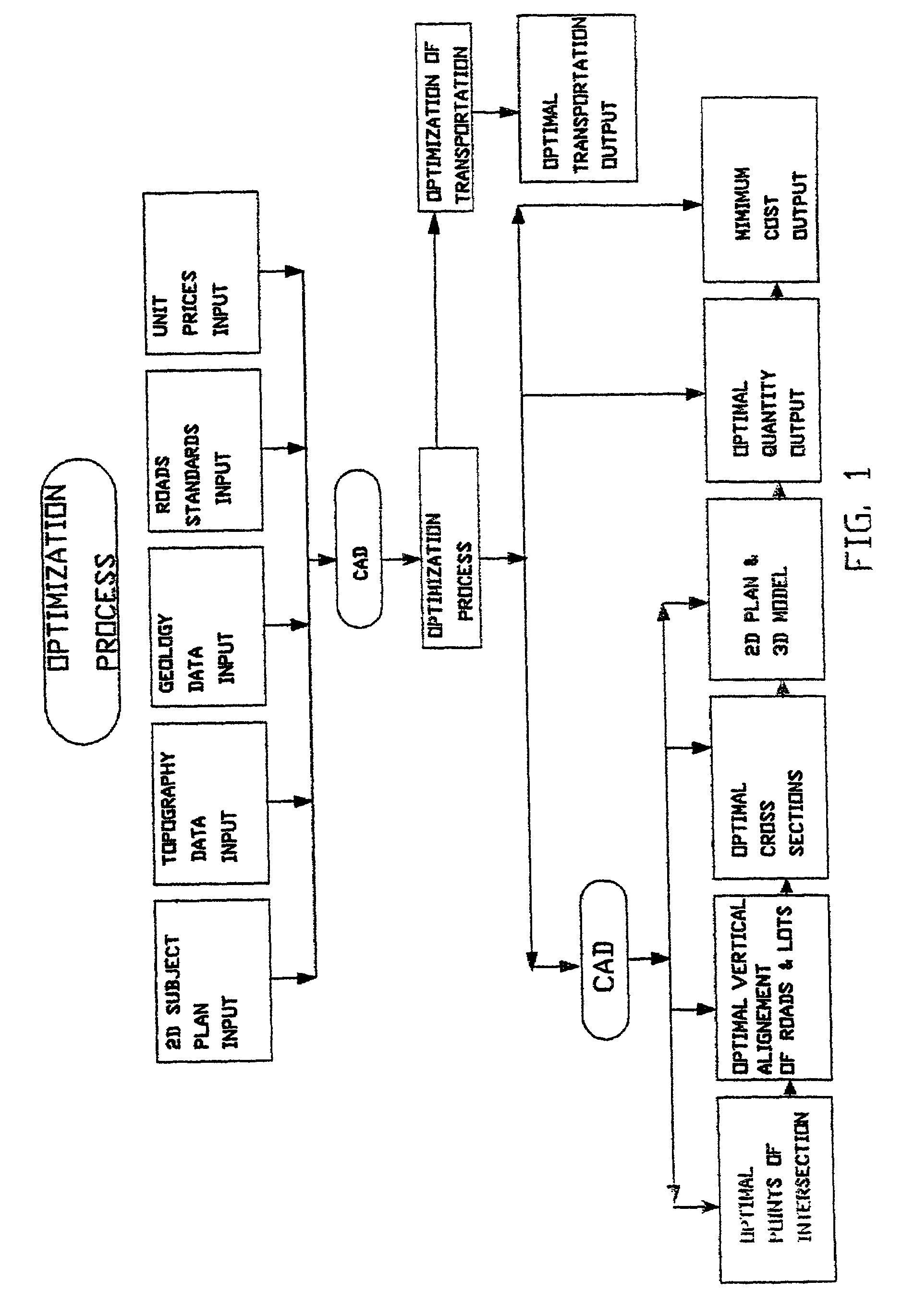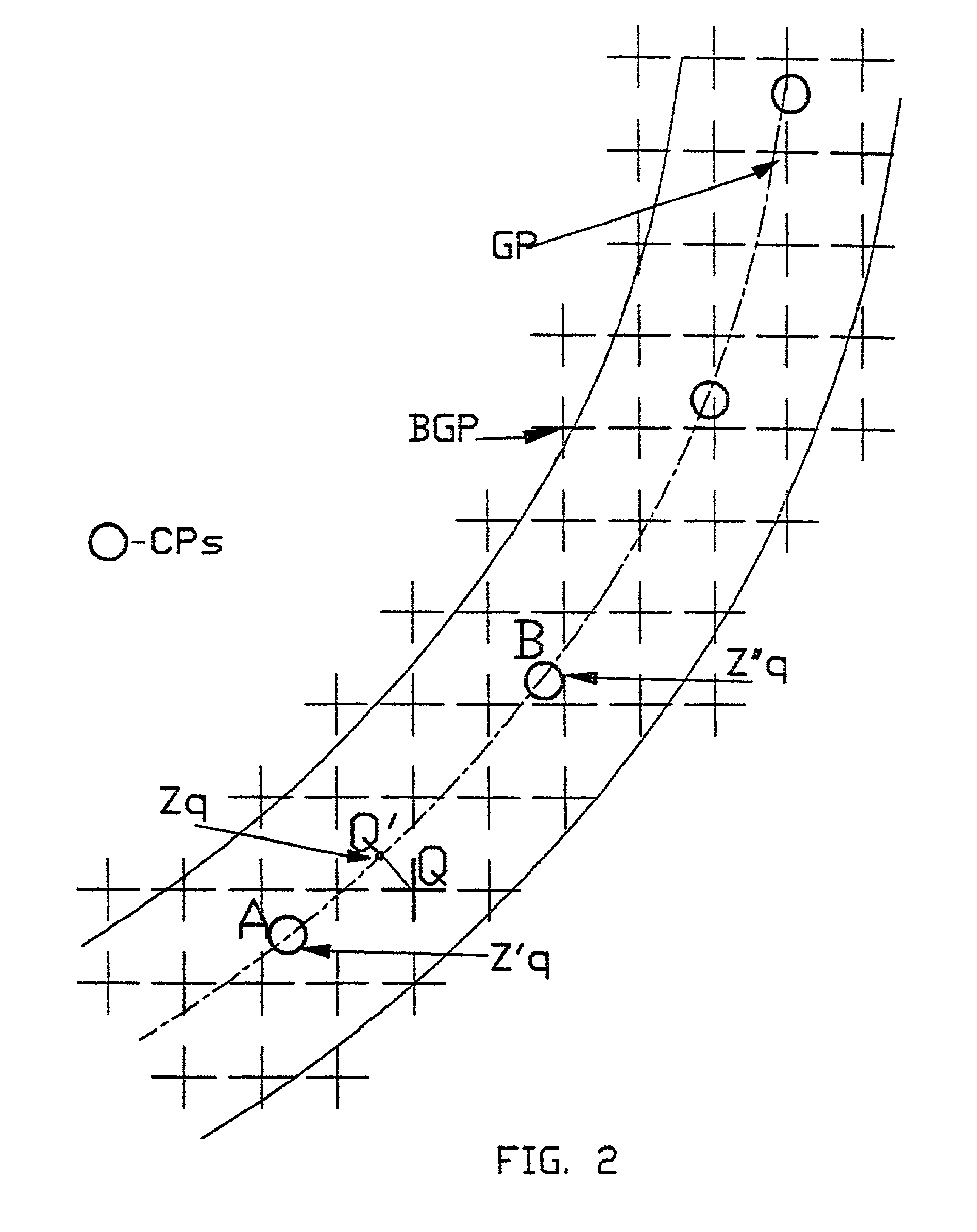Computer-implemented method and system for designing transportation routes
a technology of transportation routes and computer implementation, applied in the field of transportation route design techniques, can solve the problems of high cost, high cost of heavy and expensive machinery, and design has been a trial and error affair, and the economic factor has not been properly considered, so as to achieve the effect of reducing construction cos
- Summary
- Abstract
- Description
- Claims
- Application Information
AI Technical Summary
Benefits of technology
Problems solved by technology
Method used
Image
Examples
Embodiment Construction
[0019]FIG. 1 is a flow diagram showing the principal steps associated with an optimization process according to the invention using linear or nonlinear programming. Three approaches are described differing in the number of variables and the performance time.
[0020]1. Grid Optimization Approach:
[0021]The optimization is reached through nonlinear programming when the objective is to minimize the total cost of the earthworks. The required variables are differences between proposed road elevations and existing topography elevations at all grid points on the right of way. The relevant constraints are prevailing roads standards.
[0022]FIG. 2 shows in plan view a road surface 10 having superimposed thereon an imaginary matrix of grid points designated GP each being a node point of a rectangular grid of definite size (e.g. 5 m×5 m) that are located on the right of way. Boundary grid points designated BGP are grid points located on edges of roads, i.e. points for which distance to the road cen...
PUM
 Login to View More
Login to View More Abstract
Description
Claims
Application Information
 Login to View More
Login to View More - R&D
- Intellectual Property
- Life Sciences
- Materials
- Tech Scout
- Unparalleled Data Quality
- Higher Quality Content
- 60% Fewer Hallucinations
Browse by: Latest US Patents, China's latest patents, Technical Efficacy Thesaurus, Application Domain, Technology Topic, Popular Technical Reports.
© 2025 PatSnap. All rights reserved.Legal|Privacy policy|Modern Slavery Act Transparency Statement|Sitemap|About US| Contact US: help@patsnap.com



